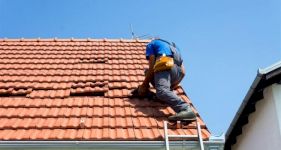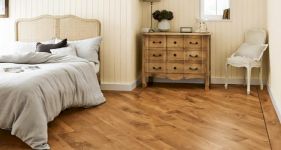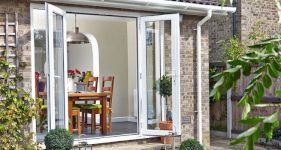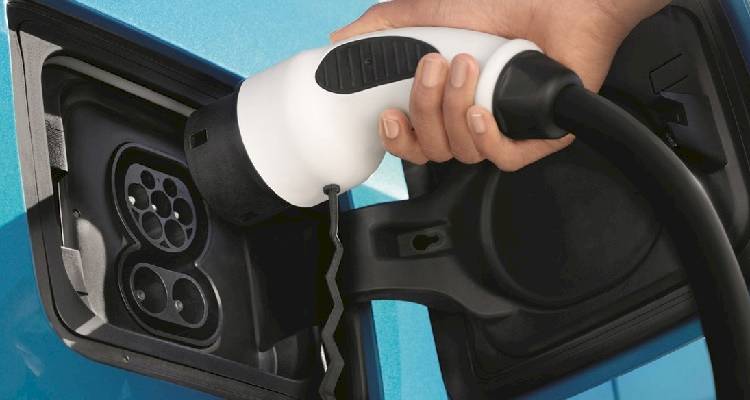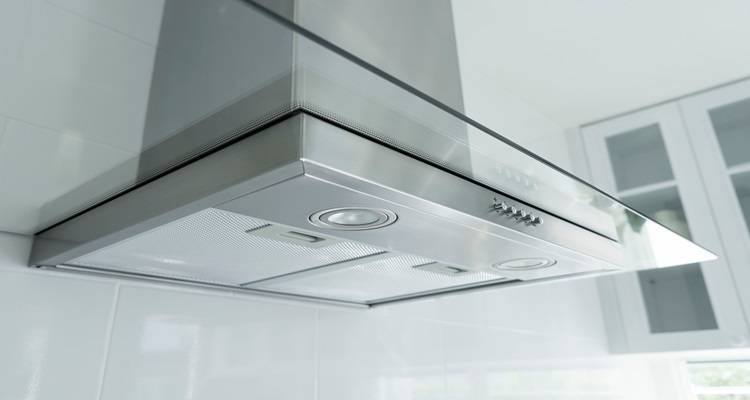TV Aerial Installation Cost
- The average cost to install a TV aerial is around £100.
- The job will take approximately 1 - 2 hours to complete.
- A complete pricing breakdown which includes types of TV aerials you can choose, along with what such a task usually involves.
- How long the job should approximately take and a general overview of what kind of jobs can be performed.
- How to find and hire a local TV aerial installer.
Want to find out how much TV aerial installation costs near you?
To fit a TV aerial, you'll pay around £50 to £150 depending on the type of aerial you need and where it's being installed.
So, what information can this cost guide offer you?
In this guide, we look at TV aerial installation prices for different house types and scenarios. We also cover how long installation takes, supply costs for the aerial if you wish to fit it yourself, and any additional costs you may encounter.
Ready to get a quote now?
MyJobQuote has a Trustpilot score of 4.8 (30,000+ reviews) and is used by more than 1 million homeowners across the UK every year.
Tell us what you're after and we'll connect you with TV aerial installers near you who can provide quotes for this job. It's free, straightforward, and there's no obligation.
Want to find out more before you start comparing TV aerial installation prices?
Take a look below at our guide...
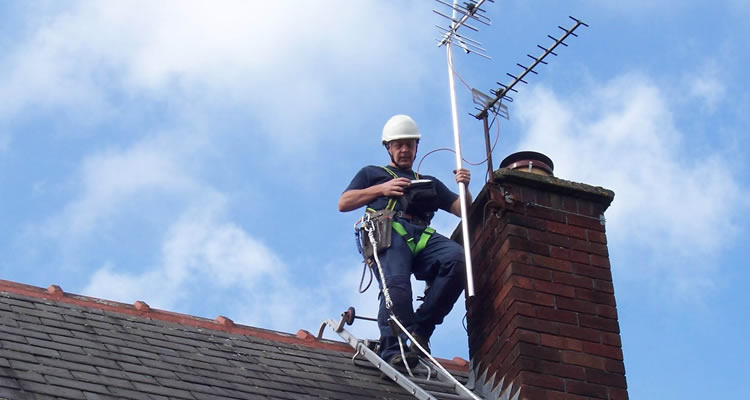
£100
Table of Contents
- How Much Does TV Aerial Installation Cost?
- How Much Is a TV Aerial?
- Additional TV Aerial Installation Costs
- Aerial Installation Costs in the UK
- What Impacts the Cost of a TV Aerial Installation?
- What Is a TV Aerial?
- What's Involved in Installing a New TV Aerial?
- Can I Install a New TV Aerial Myself?
- Types of TV Aerial
- Building Regulations & Planning Permission for TV Aerial
- Cost of TV Aerial Removal
- Hiring a Tradesperson to Install a TV Aerial Checklist
- FAQs
How Much Does TV Aerial Installation Cost?
How can you tell if you need a new aerial?
If you’ve had issues with the strength or quality of your TV signal in the past, it may be time that you considered installing a TV aerial to improve the clarity of your TV picture and the consistency of your TV signal.
How much will it cost to fit an aerial and how long will it take?
On average, installing a new TV aerial takes around 1–2 hours for a straightforward job (up to 3–4 hours if access is awkward or multiple rooms need feeding) and is best done by a qualified, experienced installer (ideally CAI-registered).
What can affect the overall costs?
Some factors can affect this installation price. For example, if your home has tricky access points, preventing the worker from reaching the parts of your home to wire or install the aerial, further costs could be induced for additional resources.
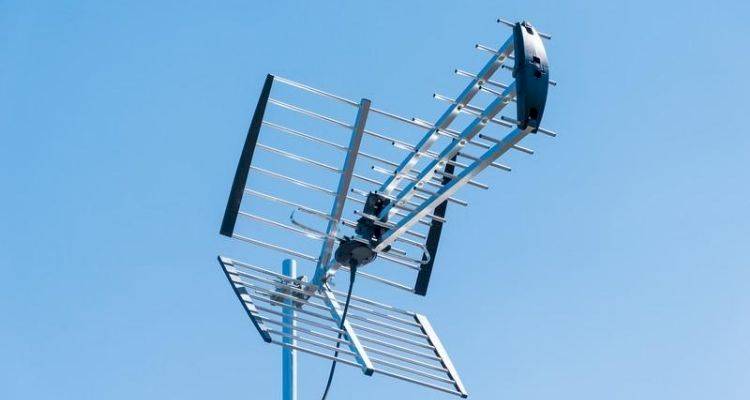
Another factor is...
If there is a larger than usual distance needing to be covered around your home, there could be additional costs for extra wiring.
Location is a major cost-affecting factor. Busy capital cities and some southern areas with a higher cost of living incur higher trade fees. This is standard across all jobs and trades.
Why is it better to hire a professional?
To install an aerial, an engineer is required to work above the ground to connect cables from your home to an aerial somewhere up high on your home.
We always encourage homeowners to use qualified, experienced installers (CAI members are a good bet) to carry out this type of work to ensure the work is done to the highest standard while maintaining safe working at height ideals.
Also...
Depending on your current service provider, there are different cable thickness options for you to choose from, something which a local professional will be able to advise on to assure you make the best choice for your home.
I'm trying to work out what TV aerial to get for my home. Is the gain important?
TV Aerial Installation Prices
Here's a table of the different types of aerial installation, their costs, and how long they take to fit:
| Job Description | Duration | Material Cost | Labour Cost |
|---|---|---|---|
| 1 Wire Aerial Installation Cost | 2 – 4 Hours | £50 | £100 – £150 |
| TV Aerial Installation Cost | 1 – 2 Hours | £20 – £50 | £50 – £100 |
| Replace Existing Aerial Cost | 2 Hours | £50 | £50 |
How Much Is a TV Aerial?
Want to install a TV aerial yourself?
The supply costs for TV aerials are reasonably priced across the board, with each type retailing at anything between £20 to £50, so there will be an option to suit all budgets.
Of course, the main cost incurred when having a professional install the aerial is the actual labour fees, as opposed to the cost of the materials and supply.
There are several different types of TV aerial available on the market, and the type you need will depend on whereabouts in the country you are, how strong your current signal is and how much of an improvement you need.
We’ll go over the different types of aerial in more detail further along in the article, but here’s a handy table to show how much each type will cost:
| Aerial Type | Price | Uses |
|---|---|---|
| Yagi | £35 – £50 | Provides a great signal range. |
| Log Periodic | £25 – £40 | Great at blocking noises that interfere with the TV signal. |
| Grouped | £25 – £35 | Distributes an even signal across channels. |
| Indoor | £15 – £35 | Offers digital compatibility and a clear picture. |
| High Gain | £20 – £45 | Offers the highest signal possible. |
| Loft | £20 – £40 | Offers a solution to bad weather while sustaining a good TV signal. |
Additional TV Aerial Installation Costs
When you are quoted for the installation of a new TV aerial, this will be for the materials and labour. However, there are sometimes additional costs that can be added to your quote if unforeseen circumstances crop up that require a fix.
Let's take a look at the most relevant additional costs of a TV aerial installation:
Scaffolding Cost
If your home has accessibility issues, the TV aerial installer may need to use scaffolding to work safely at height, in line with regulations from governing bodies.
Scaffolding costs vary depending on how much you need to hire and how much time you're expecting to keep it for.
For a job like TV aerial installation, it would typically cost around £400 to £500 to hire scaffolding for a week.
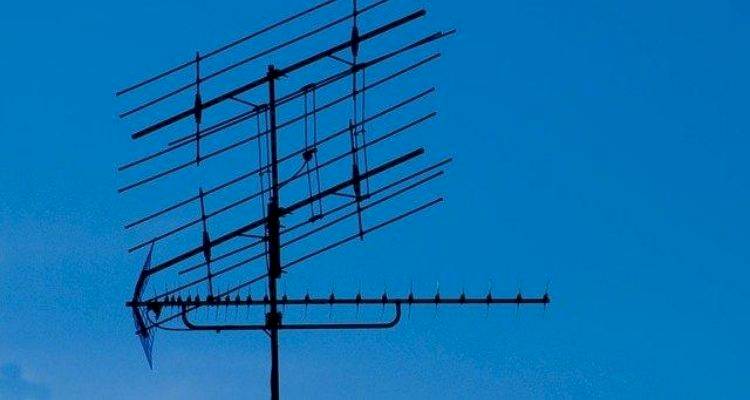
Aerial Mast Cost
Your aerial may also need to be secured with an aerial mast if the tradesperson deems it necessary. These masts aren’t expensive, so it’s always worth using one to ensure that the aerial is entirely safe and stable.
Aerial masts cost between £5 to £10, with aluminium being priced higher than their cheaper steel counterparts.
How much would it cost to secure my TV aerial?
If we replace a aerial with a new cable and installation, it would cost around £120. Sometimes we have to fit masthead amplifiers at a additional cost."
Additional TV Aerial Installation Materials
One of the main additional may be extra aerial cables, especially if your home is quite large. The job may also involve securing brackets and cable clips to assure a neat and orderly finish and maybe even a signal booster if your home is in a low coverage area.
Again...
All of these things are inexpensive but worthwhile additions. Signal boosters cost around £20 to £40 depending on the number of rooms that require coverage, cable clips cost around £2 for 100, aerial cables cost about £40 for 20m, and a bracket is about £5.
Painting and Decorating Prices
The last, but commonly overlooked, additional cost you might need to budget for is redecoration.
When getting a new TV aerial installed, you might need to touch up your décor as new cables might need to be run from outdoors into your home.
The average cost of painting a room that's between 12m² and 15m² is around £400. However, the exact price you're quoted for this type of work will depend on the size of the room.
If it's required, the cost to plaster a room is typically around £500. This might be something you need to budget for if you want to wallpaper a room instead of painting it.
Aerial Installation Costs in the UK
Now, let's take a look at labour costs and timescales.
Working with the average cost of £200 for a standard TV aerial installation, the labour fees will account for around 75% (or £150) of that cost.
What does the cost include?
That’s for the installation of the aerial, the metal bracket and the aerial mast.
What does the cost of labour depend on?
Contractors will charge more or less depending on whereabouts in the UK you are, with big cities and London generally seeing contractors charge above average as standard.
This can also change if the work extends over the estimated 2 to 4 hours for whatever reason, or if there’s additional work to be completed like the installation of signal boosters around the home.
What Impacts the Cost of a TV Aerial Installation?
Several factors can affect the cost of installing a new TV aerial — from the type of aerial being installed to the location of your property.
Here we’ll delve into these factors in a little more detail:
Type of Aerial
As we’ve illustrated in the previous pricing table, there is quite a difference in the pricing of aerials depending on which you’ll need for your home.
For example, an indoor loft aerial will cost just £15 at the low end, while a Yagi aerial would cost £35.
In addition to the cost of the aerial, different types require different configurations and adjustments. This can add to the timeframe and overall cost of labour.
I've just bought a house with 3 aerials on the chimney. Before I arrange for two to be taken down, might there be a technical reason for this?
First, it might have been more cost-effective to install individual aerials rather than an amplifier for an aerial system at the time.
Second, the aerials may have been set up to receive signals from different transmitters, such as RTE and Freeview.
This setup wouldn’t typically be installed now, as one aerial can cover most required transmissions. Depending on signal strength in your area, a signal amplifier may be needed.
Location in the UK
The location of your property will play a large part in the pricing of trade jobs.
Big cities like Manchester, London and Birmingham will naturally have higher labour prices than small towns and villages. Be prepared to receive quotes that exceed the average by a little.
Ease of Access
Some homes are naturally tough to manoeuvre around, whether down to the shape or size of the house or the layout of neighbouring properties.
If your property does have some issues with access, there may be a requirement for a different structure to safely access the space where the aerial will be installed.
Usually, this is in the form of basic scaffolding, but some tradesmen have been known to use small cherry pickers as well.
What Is a TV Aerial?
A TV aerial, or antenna, is designed to receive television broadcasts from TV stations, transferring them through the TV cables and into your TV, where it’s transformed into picture and audio.
They come in two main types: indoor and outdoor.
Both are used in different ways:
- Indoor aerials tend to be placed atop TV sets or in loft spaces.
- Outdoor aerials are typically found on the roof or high up on your home.
You'll find that different aerials are made from different types of metal, which therefore makes them look different in appearance. Aerials that are made to sit on the outside of the house will typically be sturdier than those that just need to be installed in the loft.
What's Involved in Installing a New TV Aerial?
TV aerial installs might look fairly straight-forward to do. But actually, they aren’t quite so simple.
Because they’re done from up high, involve drilling through the building fabric, and need proper signal testing, it’s best to recruit the help of a specialist.
We also recommend comparing roughly three aerial satellite quotes near you before booking someone in. With MyJobQuote, you can post the job once and hear back from local aerial installers quickly.
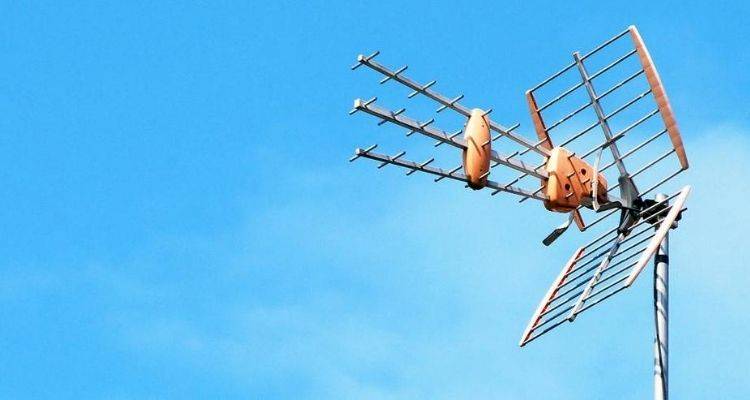
Before the Job Starts
- Survey and signal check — The installer will check local transmitter direction, test signal strength/quality with a meter, and decide on the best mounting point (chimney, gable, or loft if viable).
- Bracket and mast plan — Choose a suitable bracket (chimney lashing, gable/wall bracket) and mast height to clear nearby obstructions while keeping wind-loading sensible.
- Cable route — Agree the entry point, internal route to the TV position, and whether you want surface clips, trunking, or a concealed run. External-grade coax (e.g., WF100/CT100 type) is standard.
- Equipment spec — Pick the aerial type (usually wideband/Group T for Freeview), confirm if you need an LTE/5G filter, and decide on a masthead amp/splitter if feeding multiple rooms.
- Practicalities — Access set-up (ladders/towers), dust sheets, and a quick check for any leasehold/listed restrictions if relevant.
During the Job
- Fixings & mount — Fit the bracket securely, install the mast, and mount the aerial. All fixings are weather-suitable and set level.
- Alignment — Aim and fine-tune using a meter (not guesswork) for optimum MER/BER and signal margin, then lock off the aerial.
- Cabling — Run UV-stable coax with neat clipping and a drip loop; drill the entry hole, sleeve and seal it properly to keep water and draughts out.
- Hardware — Fit any LTE/4G/5G filter, masthead amp and power supply (if used), then connect to a faceplate or wall outlet. For multi-room, install a splitter/distribution amp and label feeds.
- Protection & tidy — Add surge/grounding hardware where specified by the system, keep bends gentle, and tidy all cabling.
After the Job
- Tune & test — Retune the TV/Freeview box, confirm channel coverage, and verify stable signal quality on every outlet.
- Handover — Show you the new routes/equipment, leave any power supplies accessible, and give simple troubleshooting tips (e.g., what to check first if you lose signal).
- Clean down — Sealant tidy-up, fixings re-check, and site left clean.
Can you explain what 4G interference is and why does it happen? How can it be prevented?
Can I Install a New TV Aerial Myself?
A lot of people are completing more tasks themselves rather than hiring a professional. However, installing a TV aerial isn’t on a par with a simple flatpack assembly.
Working at height is incredibly difficult, especially if you have no prior experience working at height. Additionally, the intricacies of choosing the right aerial, coupled with the decision on the location of the aerial on your property, can be very tough. After all, the location is paramount with TV aerial installations.
The dangers of working from height are very apparent and can become very scary when conditions turn on a whim. Falls from height make up the majority of fatal accidents across all industries in the UK, and that’s from trained professionals. The layman will find it even more difficult, as it’s likely they won’t have the correct equipment to work safely and efficiently.
Why does my TV signal break up when it rains?
Now, there are some aspects of TV aerial installation that you can complete yourself. Indoor aerial installations are very straightforward and pose no threats or dangers to your safety, along with the configuring of your TV set.
The clipping of TV aerial cables to your home, to ensure it’s neat, tidy and safe is another task that can be done very quickly. However, we would always suggest using a trained professional to install the actual aerial and mast.
Types of TV Aerial
In this section, we go through all the different types of TV aerials that you can get in the UK.
The illustration below provides a quick overview of what your options are, as well as how much these different types of TV aerials cost in 2026.
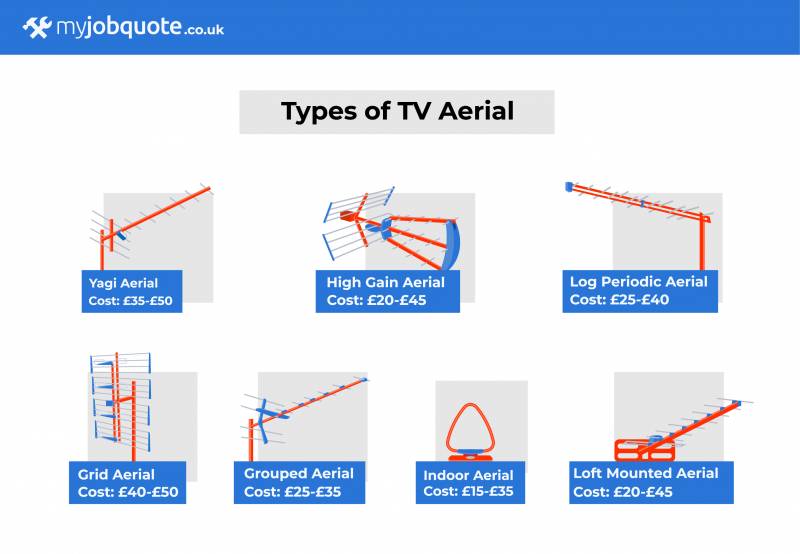
Yagi Aerial Cost
This TV aerial is the most commonly used in the UK and resembles the typical TV antenna.
The Yagi has a long boom-rod on it and a right angle that shows several conductive elements that pick up the TV signal and feed it into the boom and transmit it down the boom. These aerials are faced in direction and receive a wide range of signals in order to achieve better signal strengths.
High Gain Aerial Cost
A high gain aerial is designed to increase and boost the TV signal received from the TV stations to provide a more stable and clearer connection. It’s perfect for those areas that struggle with TV signals and is usually the best choice for those locations.
The high gain aerial is a lot larger than others in size and requires a longer boom section to work fully. It also requires a more robust aerial mast to avoid bending over time.
Grid Aerial Cost
Grid aerials are quite unique in that they are flat panels with all the elements hidden inside. It’s relatively uncommon to come across a grid aerial as they don’t work very well with digital TVs. They also don’t have a significant gain on them, making them virtually useless in poor signal areas.
Indoor Aerial Cost
An indoor aerial is a compact antenna that sits close to your TV (some models include a built-in amplifier) to help pull in a usable signal to your TV services if you’re suffering from a fuzzy or weak picture.
These aerials come in a variety of shapes and sizes from a variety of providers — they’re not renowned for being revolutionary devices. Still, they could provide the extra bit of power you need.
Loft Mounted Aerial Cost
Loft-mounted aerials are cheaper than outdoor aerials despite working in a similar fashion.
Due to them being under cover, they don’t need to be as heavy-duty as aerials left out to battle the elements, making them cheaper and very effective.
Building Regulations & Planning Permission for TV Aerial
You won’t need planning permission for the installation of a TV aerial as it is covered under the permitted development rights on your home.
However, there are some restrictions on the type and size of aerials you are allowed to install.
For houses up to 15 metres high:
- There can’t be more than two aerials on the property.
- If you’re installing just one antenna, it can’t be more than 1m wide; if you're installing 2, the additional aerial can’t be wider than 60cm.
- The cubic capacity of the aerials must be less than 35l.
- If you’re mounting it on the roof, it must not project more than 60cm above the highest part of the roof.
For houses over 15 metres high:
- There can’t be more than four aerials on your home.
- Each aerial cannot be wider than 130cm.
- Each aerial must have a cubic capacity of 35l or less.
- An antenna mounted to a chimney stack cannot exceed 60cm in width.
- An antenna cannot extend more than 300cm from the highest point of the roof.
When you hire an installation expert, ensure that these rules have been followed; otherwise, it will be you who has to pay any fines or cautions for breaching the regulations.
How many TVs can run of a single aerial?
Generally, with a good-quality installation, you should be able to run up to 3 TVs without needing an amplifier. If more TVs are required, a signal booster or distribution amplifier may be necessary."
Cost of TV Aerial Removal
You may want to remove your TV aerial to take it to a new home, take it down as you don’t use it or remove it after fearing it has become unsafe over time.
Simply removing an aerial instead of replacing it is much cheaper and more straightforward. However, we still wouldn’t recommend it as a DIY project as it still involves working at height with heavy materials.
If you did need an aerial removed, you can call the same people that would fit one, and they can typically take it down and dispose of it for less than £100, that is of course if you don’t want to keep it for any reason.
Should I remove my TV aerial if I’m not using it?
Hiring a Tradesperson to Install a TV Aerial Checklist
Getting a solid Freeview signal isn’t luck. Actually, it’s down to good kit and neat cabling. It also involves proper meter-led alignment.
Before booking an installer, take a peek at this quick checklist. MyJobQuote lets you post the job once then weigh up quotes from specialists near where you live.
- Are they CAI members? Look for the Confederation of Aerial Industries (CAI) — it’s a good sign they follow best practice and use compliant materials.
- Public liability insurance? Not a legal must, but you’ll want cover in place for work at height and drilling through external walls.
- Meter-led alignment, not guesswork? They should tune using a signal meter (MER/BER), not just “point and hope”. Ask them to confirm.
- Itemised quote? Ask for a clear list covering the aerial type (wideband or Group T), the mast and bracket, cabling (WF100/CT100), filters for mobile signals, amplifiers/splitters, and any scaffolding or towers if access is tricky.
- Multi-room set-up? If you’ll want tellies in other rooms, check how the signal will be split, what kit’s needed, and how they’ll mark everything up so you can find it later.
- Cable routing and finish? Sort out in advance the entry point, sealing, and whether clips or trunking will be used. Confirm where any PSU or faceplates will go. Any cable outside should be UV-stable and fitted neatly.
- Do they have experience and examples? Have they done similar installs recently in your area? Ask for photos or check their MyJobQuote profile gallery.
- What about reputable reviews? You can find out about what other homeowners are saying on MyJobQuote and read reviews about how they deal with issues and call-backs.
- How long and how safe? If it’s a straight run outside, they’ll often finish within a morning. More complex routes will add time. Make sure they’ve got a safe way of handling any jobs that need height work.
- Guarantees & aftercare: Ask about workmanship warranty and what’s covered if channels drop out. Filters/amps should be serviceable and accessible.
- Waste & clean-up: Old aerials, offcuts and packaging — is removal included?
- Payment terms: Agree when you’ll pay (e.g., after signal tests on every outlet). Avoid big upfront payments for small domestic jobs.
FAQs
Which is better – a loft aerial or a roof aerial?
A loft aerial can do the job if you’re in a strong signal area, but it’s not usually as reliable. If your picture keeps breaking up, a roof aerial that’s properly fitted and lined up is the safer option.
Can I watch TV without using an aerial?
If you want Freeview channels, though, you’ll still need an aerial. No aerial, no Freeview. The other option is satellite, like Freesat, which works through a satellite dish.
Why has my TV signal suddenly vanished overnight?
Quick things to try: check the lead is pushed in properly, test another TV point if you’ve got one, run a retune, and take a look at the cable for damp or damage. If nothing changes, call an installer – they’ll test the signal and realign the aerial if needed.
How many TVs can I run from one aerial?
Every extra run of cable weakens the signal a bit, so it’s worth asking your installer to check each outlet and set it up correctly.
How long should a TV aerial last?
Indoor or loft aerials aren’t battered by the weather, so they can last longer – but they rarely match the picture quality of a properly sited roof aerial.



